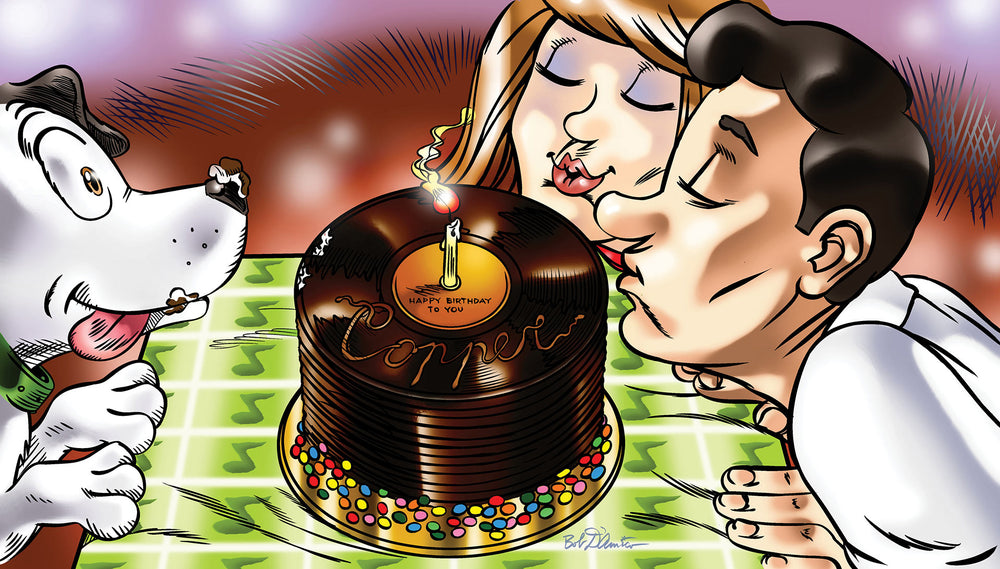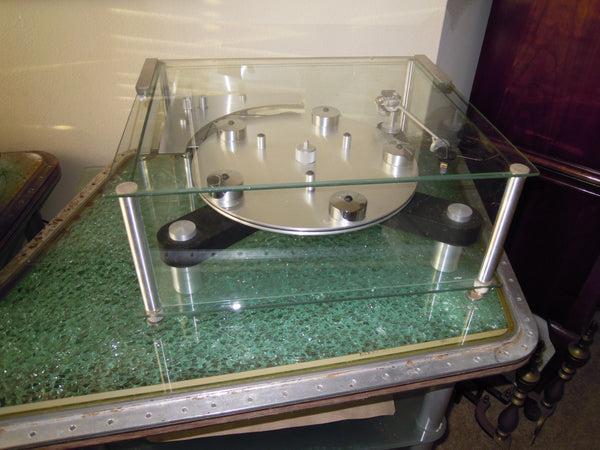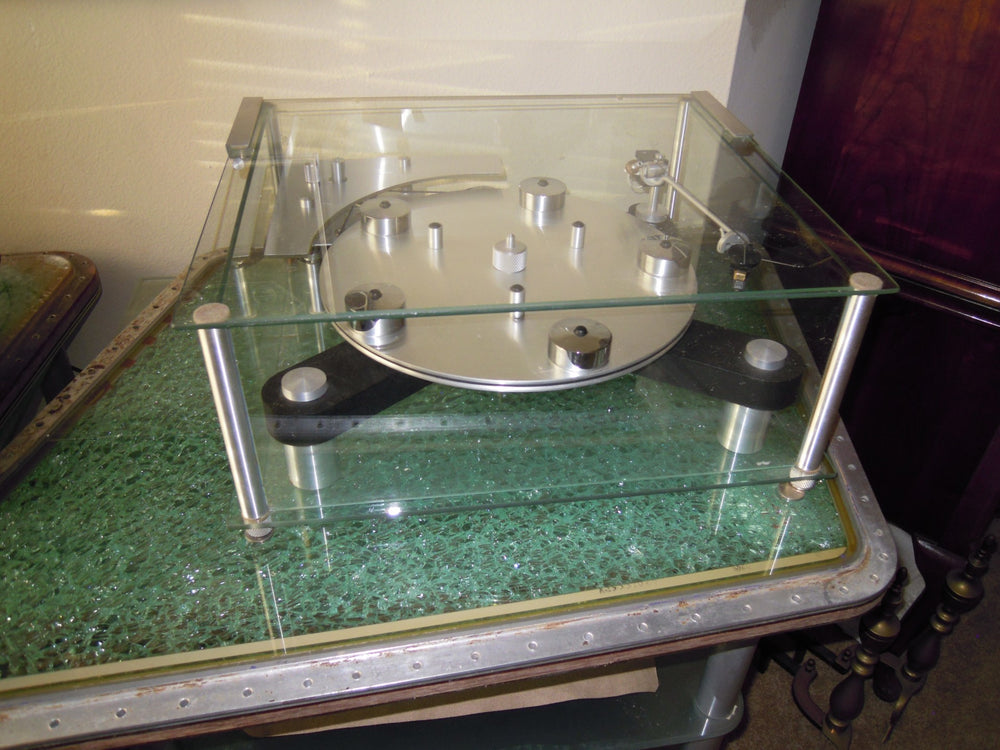
It honestly, really, truly came as a shock to me when I realized that Copper's first anniversary was just ahead. Copper #1 went live on March 3rd, 2016---so this will have to serve as our birthday edition.
Our initial plan to publish on a weekly basis was hugely optimistic, and we quickly shifted to every two weeks. Notice that I don't refer to our publication schedule as "biweekly" or "bimonthly"...and here's why: "Biweekly: appearing or taking place every two weeks or twice a week." "Bimonthly: appearing or taking place every two months or twice a month."
What madness is this? It's as bad as "flammable" and "inflammable" being synonyms! Or "regardless" and "irregardless"! Aaaaghhhh!!
"Semi-monthly" would appear to be the correct term, as it means "twice monthly", and nothing more. But that would mean 24 issues per year, and....
Thus, "every two weeks". English, she is a funny language.
But I digress.
This issue opens with Industry News about MQA; Dan Schwartz writes about the late Larry Coryell; Professor Schenbeck sprinkles on the Style; Richard Murison gets uncharacteristically irate about the Crown Jewels; Duncan Taylor writes about reggae, and introduces us to Intuit; and WL Woodward looks at funk. I continue the Spica saga with an interview with the brand's creator, John Bau, and rant about remembering in Cynic. Duncan does double-duty with Part 1 of an ambitious DIY subwoofer project; we talk with Cartoon Bob; and Jan Montana stirs up trouble with his listening buddies again. We wrap with an especially yummy reader system of scarce'70's gear, and a striking Closing Shot from Publisher Paul McGowan.
And now, a rare moment of sentiment from Ye Olde Editor: thanks for the tremendous support shown to Copper for the past year. I appreciate everyone who reads the mag, and I am especially thankful for those who take the time to write....and write...and write....;->
Here's to many more years!
Cheers, Leebs.
###
Congratulations on Copper Magazine’s first birthday, a monumental landmarl for any infant. When Editor Leebs and I first envisioned the magazine, we wanted more than anything to accomplish two goals: build a thriving community and foster awareness for music, the arts, and high-end audio. I think we’ve succeeded. Copper’s circulation is approaching the 10,000 mark and shows no signs of stopping. The articles get better, the subject’s broader, the community the richer for it.
My personal and heartfelt thanks for all those that contribute, but mostly, to our readers who are the core of the community. I am honored to consider myself a member of this great group of people.---Paul McGowan, Publisher
###
When I came to PS Audio a year and a half ago to seek sponsorship for my Second Story Garage project, about two hours (!!) into my visit, Paul started to tell me about an available job he thought I might be good at. I walked out of the factory admittedly buzzing, but reality eventually set in and I was greeted with a difficult decision. The staff at my former employer, the local newspaper The Daily Camera, could not operate the Second Story Garage live video recording studio project without me. During my interview process with PS, I voiced a concern that my joining the team might mean that this amazing music project, my baby, could see its end. The management at PS is simply awesome, and they expressed that the passions of their employees were important to them. They were as interested in seeing my project survive as I was. The newspaper also had interest in continuing a partnership, even discussing a big future investment in a new studio. Unfortunately, the reality of today is that newspapers are contracting, not growing. In the time since I joined PS Audio, the newspaper has shed even more jobs, including two in the photo staff. Second Story Garage can’t function without adequate photo staff.
Right now, the Second Story Garage project is on indefinite hold, and has likely come to an end. I feel as though I should probably be sadder about it than I am---but I'm in a good place about the whole thing.
The fact is that YOU, dear reader, are the source of my uplifted spirit. This writing opportunity I've had with Copper, where I get to delve into my memories from Second Story Garage and share the stories and techniques and headaches… honestly, it's really been a gift to me on a personal level.
I want to thank you all for reading any of my techno twaddle (my binaural blather, or channel chatter) over the seasons. I don't use the best syntax or grammar, and I often emerge foggy-headed after cranking out a 1700 word column for DJ Leebs. But I continue to crank it out because every issue I'm given the chance to remember and savor a fascinating experience from the past. For that, again, I am grateful. Much more to come from my department -- stay tuned!---Duncan Taylor
###
I’m afraid my prime experience of writing for Copper, now that we’re a year into the project, is very selfish. Aside from getting to know Bill Leebens, it’s been about experiencing my own mind, post-stroke. I’ve found, that when I’m fairly excited by my topic, my spoken language gets hung-up. (My wife and adult daughter tell me that, at last, I’m like everybody else. To which I say, “Hah!”) But writing, you would think, would be different, and it is ---- to an extent. More than ever, however, I discover the truth of the saying, “Writing about music is like dancing about architecture”. I want to say, “Just listen!” But that’s not the job, and unlike the distant past, I struggle frequently to find the things that I want to say about the subject of my columns.
But --- without HAVING to do this, I wouldn’t. So thanks to all of the readers, and Bill and Paul, for cracking the whip.---Dan Schwartz
###
Happy Birthday!
This issue commemorates the first anniversary of Copper Magazine. It’s been a long strange trip and will continue thanks to all you readers out there. I started when they asked me to write an article and I did write up the 2016 Grammy show. That article was weird enough they asked me to write more and they’ve been sorry ever since, but they’re too nice to ask me to just stop already.
We have some wonderful writers and great content. I thoroughly enjoy every issue and it keeps getting better. In fact, I think the last issue is my favorite. Thanks to Bill Leebens for his steadfast and patient editor work, and Paul McGowan who started the mag with Bill and allowed us to keep going. And thanks to all of you for reading and writing. Couldn’t do it without y’all. ---Woody Woodward
httpv://youtu.be/MjF1bG5LUcs





















